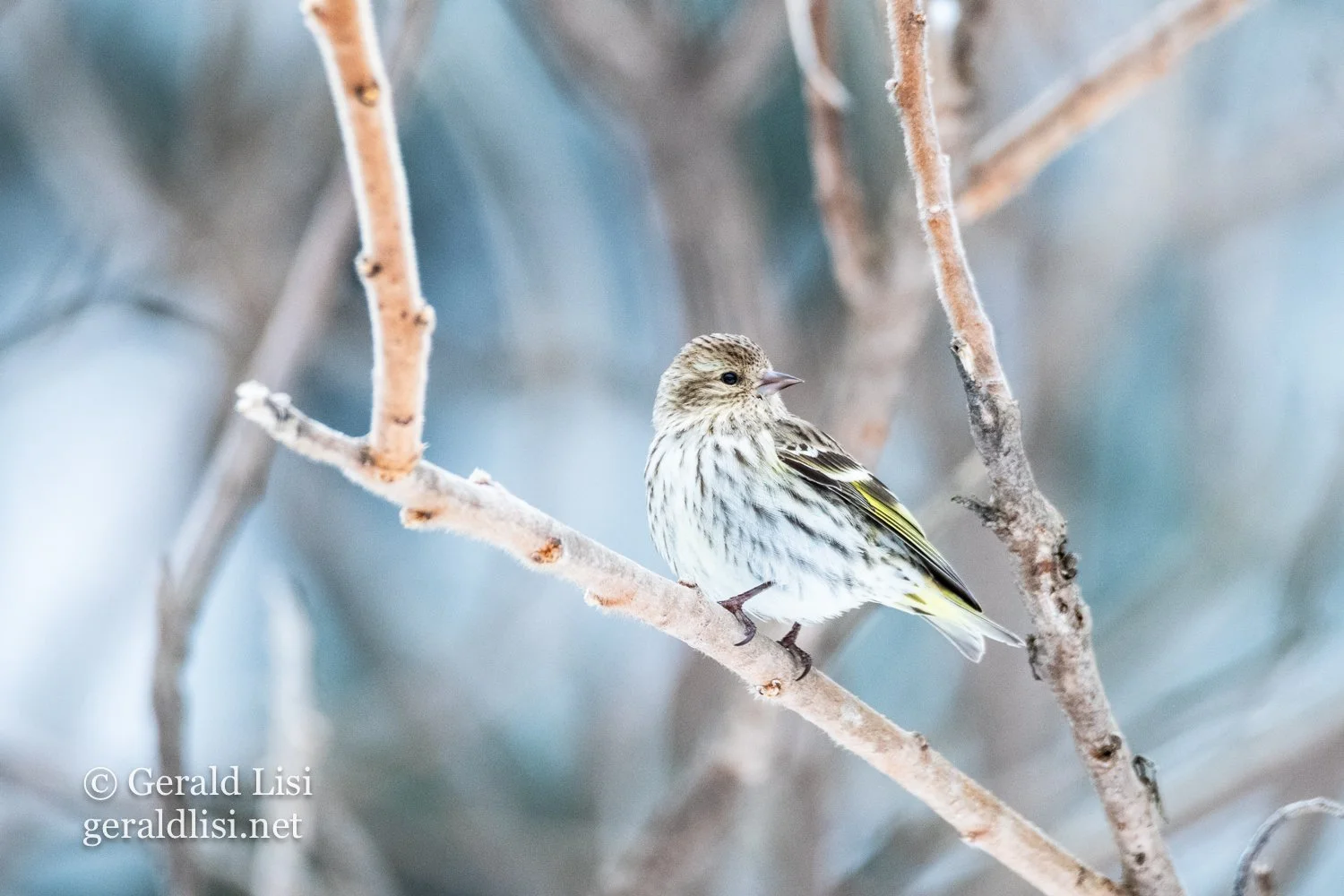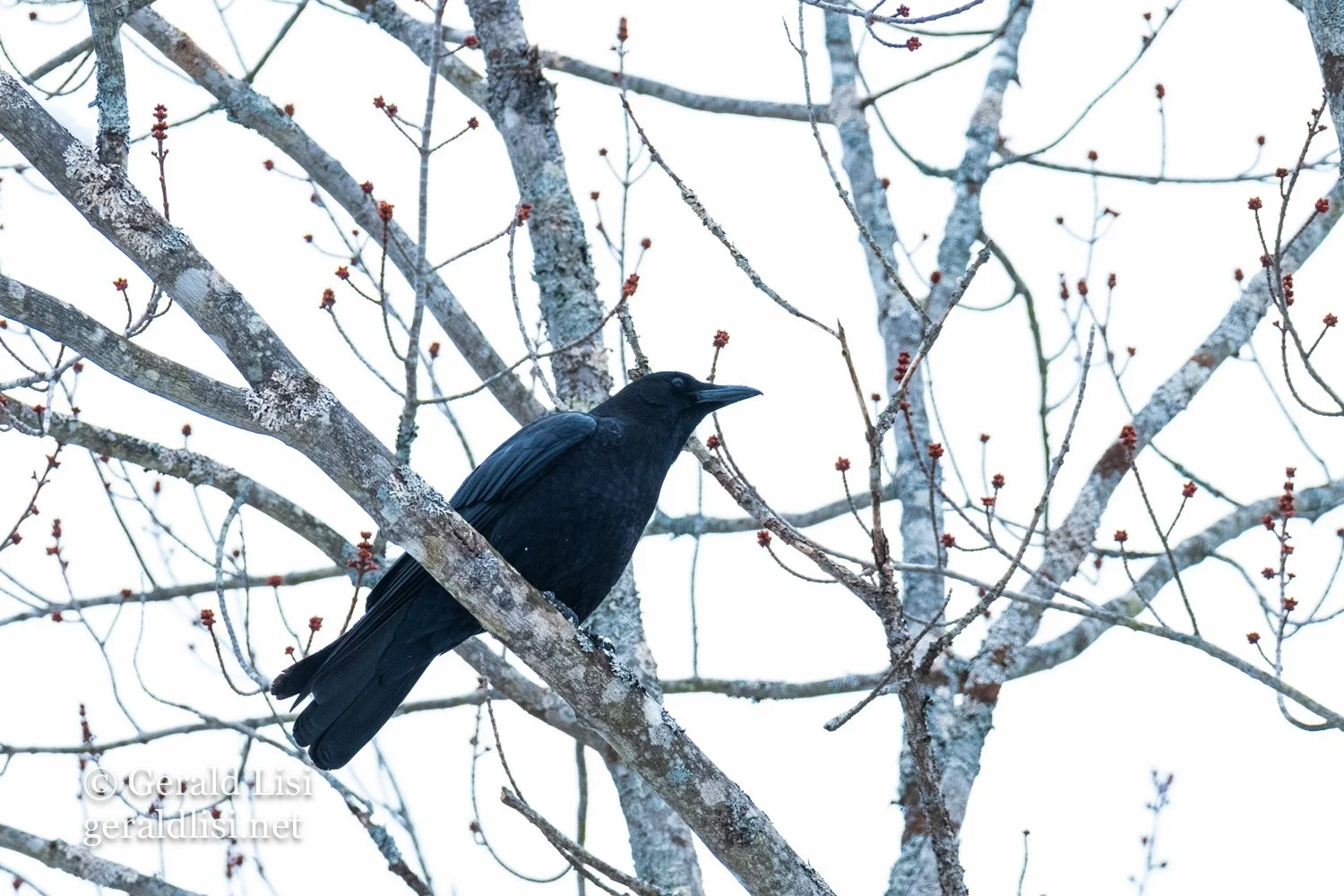Not Spring, Not Winter
According to the calendar spring started on March 20th. I’ve always felt that was completely arbitrary. Spring involves many delightful events, but to me the ones that officially kick it off are the emergence of shoots from herbaceous perennials and the leafing out of deciduous trees and shrubs. As I write on the 30th of March these long-anticipated botanical activities have not yet unfurled spring’s myriad green flags, but that’s not to say that spring is not in the air.
A better way to say it is that spring is on the wing (high fives self for stumbling into this rhyme). Warmer temperatures and especially increasing day length have activated the mating instinct in every bird I see or hear. Testosterone can hardly be contained within their little bodies and its results are being released in frequent calls, songs and woodpecker drumming, as well as driving courtship chases and mate-competition altercations. These particular signs of spring were in fact manifesting by the 20th, but have amplified significantly in the last few days. Yesterday all of this excitement was juxtaposed with half a foot of fresh snow. Does this mean it’s still winter? I can’t say that I am of that opinion, but it’s certainly not spring either.
One thing that I love about the change of seasons is how some elements of the one that’s ending overlap with those of the one that’s beginning. Nature is complex and defies our efforts to neatly divide it’s parts into categories. I’ve always been enthralled by ecotones, where one natural community type transitions to another. Now I’m thinking of the change of seasons as a temporal metaphor for this spatial phenomenon. This niche analogy only goes so far, but I think it’s worth exploring since it draws from the wonder that the more than human world provides. Meanwhile the only wonder I’ve been getting from the human world is wondering what the hell is wrong with people. Present company excluded, of course. The obvious point of all of this is birds. Let’s look at some birds.
This Song Sparrow is a new arrival in my yard. While some of these ground-foraging birds somehow manage to overwinter in Vermont most arrive from southern vacation spots around now.
Fox Sparrows pass through Vermont on leisurely migrations too and from their northern breeding grounds.
Slate-colored Dark-eyed Junco females are light gray above with varying amounts of light brown on their sides and backs. I’ve had a handful of Juncos around the house all winter, but on the morning of the 30th I counted 28. They have contributed more tha their share to soundscape of the changing season.
Here we see that the male Slate-colored Dark-eyed Juncos are much darker with no brown. Note the pink bill in both sexes. Males in this flock greatly outnumber females, which is common across species.
Pine Siskin in Staghorn Sumac. I had very little Siskin action this winter, but am pleased to report that a flock arrived recently. Flocks of these little finches follow the cone crops of conifers, birches and alders, and like other finches they visit bird feeders.
American Robin male finishing off a cluster of Staghorn Sumac berries. Most Robins head south for the winter. Fruiting trees provide winter fare for the early arriving males, who are establishing nesting territories, and the few who overwinter. As soon as the ground is bare they switch to worms, of course, and other ground-dwelling invertebrates.
Once his belly was full this guy perched for quite a while on this birch branch.
Hairy Woodpecker males are distinguished by the red spots on the backs of their heads. Downy Woodpeckers have the same plumage patterns, but are smaller with shorter bills, and they tend to forage on the branches rather than trunks of trees. This guy was chasing around his lady love, squeaking with amorous delight as he did so. I’ve heard similar courtship vocalizations from Flickers and Sapsuckers, but this was my first time seeing this species doing it.
This Crow is one of four who spend some time here. They are most likely a mated pair and the young from last year.
The other Corvids that visit my yard are Bluejays, and are similarly likely to be a mated pair and last year’s young. Their is a Ravn family in the area too, who sometimes visit my woods, but not the yard.
So there’s a few of the birds whose company I enjoyed at home on the 29th. My full species list for the day was as follows.
Slate-colored Dark-eyed Junco, Song Sparrow, Fox Sparrow. Black-capped Chickadee, Tufted Titmouse, Red-breasted Nuthatch, White-breasted Nuthatch, Brown Creeper, American Goldfinch, Pine Siskin, American Robin, Downy Woodpecker, Hairy Woodpecker, Pileated Woodpecker, American Crow, Bluejay, Mourning Dove
That’s eighteen species, which is more than I’ve had here since October. Spring is indeed on the wing!
Surprise! Birds aren’t the only charismatic vertebrates I have to share with you. Imagine my delight when this Long-tailed Weasel zipped across my porch. I was sure he would be gone when I rushed out the with my camera, but fortune and the bold/curious behavior of these weasels was on my side.
Here he peeks from under the steps outside my bedroom. After his inspection I suspect any rodents around the house have been converted to weasel flesh. Just a couple nights before I had a five hundred pound Black Bear out there, certainly a male. He stole a fresh block of suet from my feeder, but was good enough to leave the feeder itself. No pictures as this was the middle of the night. As much as I would like to see him in daylight a fed bear is a dead bear, so I had to scare him off. A simple rapping on the window sufficed to have him swiftly loping off into the woods.
I’ve never gotten good Long-tailed Weasel photos before, and this was my first time seeing them in their north-country winter coats. The white pelage seen here will sooj be replaced with a shorter coat of browns, with a bit of a dark mask. Seeing a photographing this guy was a real treat. It helps to be in the woods of Vermont, but wherever you are there’s wildlife that will surprise you right outside your door. Pay attention and you will be rewarded!
That’s it for this month, my friends. Thanks for taking the time for this. If you’re reading this in an email please consider forwarding it to someone who might enjoy it. If you’re reading it on my website or in a forwarded email please consider visiting my home page to subscribe, https://www.geraldlisi.net/ . Thanks and take good care!













